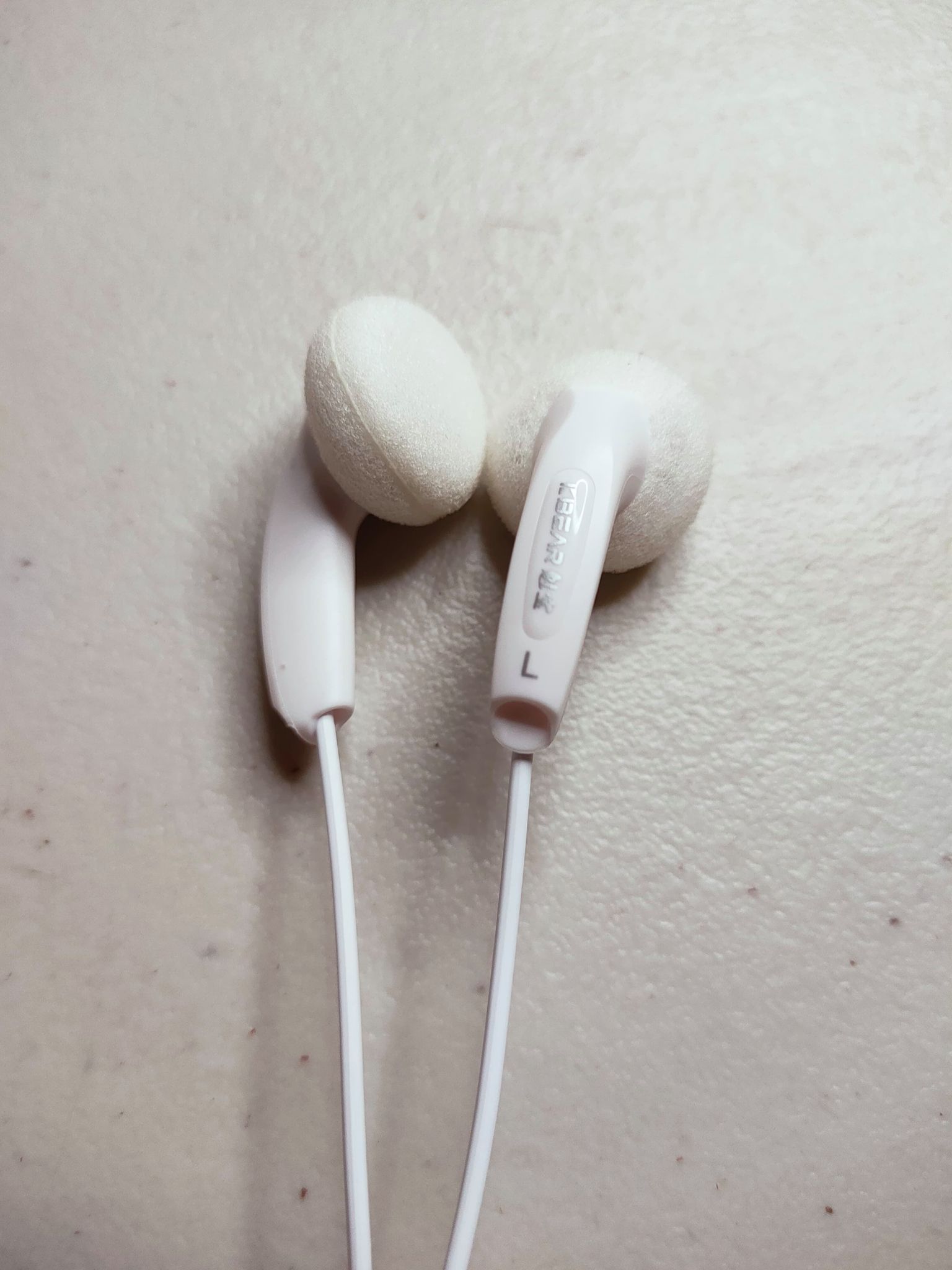Introduction
The world of headphones does not stop and there are more and more products that generate great sound at the best price. And there's probably no better way to do that than with Earbuds. Ever since the VE Monk came on the market, with its ridiculous price, something broke, for the sake of audio enthusiasts. Now, it is very easy to find many earbuds that want to reach the open path, improving the sound. This is the case with two very similar earbuds, so much so, that at first I thought they were clones, looking at their specifications and drivers. Luckily, they are not. Even one is cheaper than the other. KBEAR has released some earbuds with the classic MX500 capsule, whose price during Black Friday is 3 euros. Previously, NiceHCK released a very similar model, whose price in this special week, is around 4 euros. In this little review I'm going to try to discover their differences.
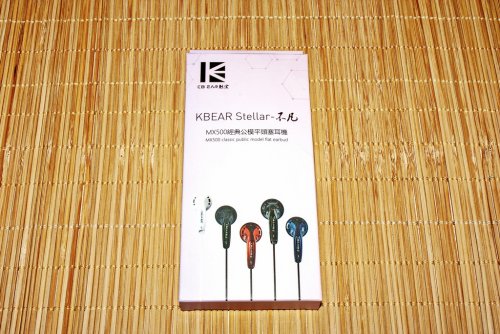
 Disclaimer
Disclaimer
KBEAR, (thanks to
@WendyLi) and NiceHCK, have offered me both earbuds, in exchange for writing my humble opinion about them. I want to make it clear that all my opinions written in this review have not been conditioned by this fact, nor will I ever write anything that I do not really think or feel here. I will only write about my personal opinion in relation to the revised product.

 Specifications KBEAR Stellar
Specifications KBEAR Stellar
- Driver type: 15.4mm Dynamic Driver with Japanese PPS diaphragm
- Frequency Response: 20Hz- 20kHz
- Sensitivity: 115±3dB
- Impedance: 30Ω
- Jack connector: Straight 3.5mm
- Cable length: 1.2m
- Material of the capsule: ABS imported from Japan
- Capsule type MX500.
- Available in red, black, blue, white and transparent black. Optional microphone.
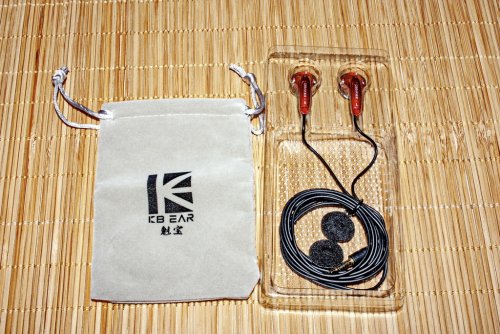
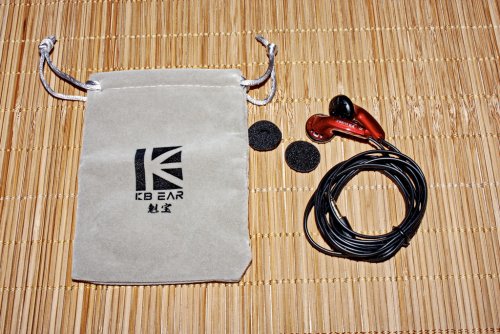 Specifications NiceHCK Traceless
Specifications NiceHCK Traceless
- Driver type: 15.4mm Dynamic Driver with Japanese PET diaphragm
- Frequency Response: 20Hz- 20kHz
- Sensitivity: 115±3dB
- Impedance: 32Ω
- Jack connector: Straight 3.5mm
- Cable length: 1.2m
- Capsule type MX500.
- Available in red, black, blue, white and red-blue transparent. Optional microphone.
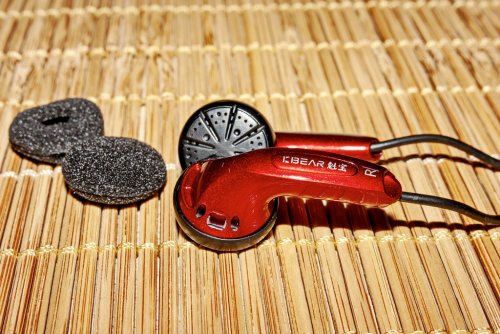
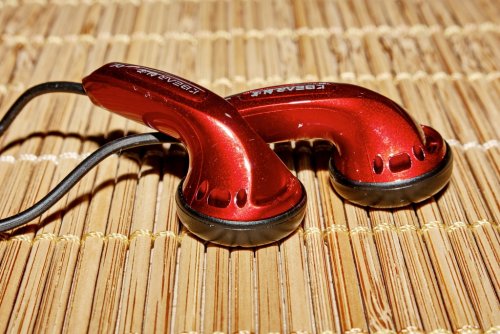 Packaging
Packaging
I received two KBEAR Stellar. The first pair came with the same presentation as the NiceHCH, a simple sealed plastic bag. One side is opaque, the other transparent. On the KBEAR, the opaque side is white, on the NiceHCK, silver. Each headset comes with a complete pair of foams. Nothing else.
But on the second pair of Stellar, they came in a very faint pink cardboard box. Its dimensions are 160x77x18mm. On the main side is the logo of the brand, the model and a small description. Underneath are 5 real photos of all the colours in which you can choose these Stellar. On the back side are written the specifications. Inside it comes a plastic blister in which the earbuds are encased, as well as the classic KBEAR cloth bag for storage and a pair of black foams. It's a bit strange that at first they came without a box and then with one. Another thing that has caught my attention is that from the AliExpress purchase website, you can see that there is even another, newer presentation, where the box is smaller and a little thicker.
On the other hand, looking at the web, the sensitivity of the Stellar is 115±3dB and in the box I received it says 106±2dB. I have spoken to WendyLi from KBEAR and she has assured me that the correct value is 115±3dB and that in the next batch, they will correct it on the box, as well as improving the information provided. So the cardboard packaging will remain.
Be that as it may, it seems that the Stellar, although cheaper, will definitely come in a cardboard box, instead of a simple plastic bag. They also come with a bag for storage, which for the price seems incredible.

 Construction and Design
Construction and Design
The two models are virtually identical, and both feature the same classic MX500 capsule. Even the colours are very similar, with slight variations in tone: blue, white, red and black. The different models are the transparent black for the Stellar and the transparent blue-red for the Traceless. The cable is almost the same, the KBEAR is matt and the NiceHCK is slightly brighter. Both have the same length, but in the Traceless, their splitter piece is a few centimetres closer to the capsules. On the other hand, the jacks are identical.
KBEAR's specifications indicate that they are made of ABS material imported from Japan. Nothing is indicated by NiceHCK, but this is not something that can be detected by the naked eye: both headphones appear to be equally strong and of the same construction quality.

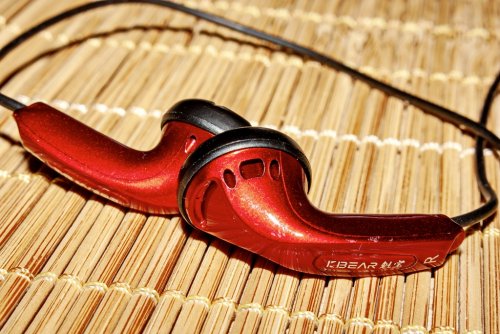 Adjustment and Ergonomics
Adjustment and Ergonomics
At this point I can comment little on the ergonomics and fit of the MX500 capsules. For my taste they are somewhat large, but they fit more tightly because they insert better. In the long run, I find them a little more annoying than the other models. I think this type of capsule encourages a greater presence in the lower area, perhaps due to the greater contact and the possibility of mounting larger drivers.

 Sound
Sound
 Profile
Profile
The profile of the KBEAR Stellar looks like a slight warm V, with emphasis on the mid-bass and treble. The NiceHCK is more balanced, with a more linear low end, fuller and more present mids, but with more controlled treble.

 Bass
Bass
Mid-bass predominates on the Stellar, over the Traceless. Texture and speed are similar, but the punch is somewhat greater in the KBEAR. The Traceless have a more linear and deeper bass, but the incidence of low end in the Stellar is higher. This makes the lower range denser, a bit darker and a slightly cloudier. The bass incidence in the Traceless is more neutral in the sound, without implying its absence, far from it. There is more power and a somewhat more punchy punch in the Stellar, a more controlled and respectful, yet energetic and vivid expression in the Traceless. Those who like their bass a little more emphasised would choose the KBEARs. But the low end of the Traceless has more than enough to satisfy most bass lovers. In addition, the linearity of their low end provides a cleaner and clearer sound, where better details and planes can be distinguished, as opposed to the density and thickness in the mid-bass of the Stellar.
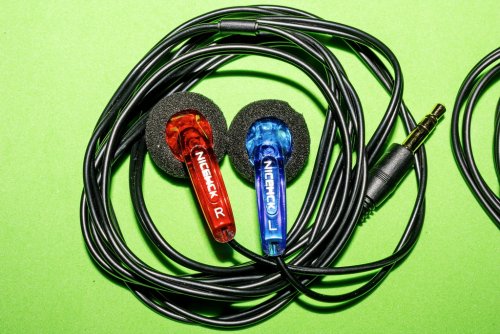
 Mids
Mids
I can't say that both earbuds are characterised by high mid-range clarity. And it is common in this area to find that the relationship between the ergonomics of the capsules, their shape, their fit and the use of the full foams in the earbuds, do not favour the light in the mid-range. On the Stellar, however, this area is more cloudy, offering less definition, a little more distance and a more diffuse resolution. There is more light in the Traceless, a characteristic that is easily felt, not an overwhelming difference in vocals, but somewhat more noticeable when the range presents a richer instrumentation. The incidence of bass in the Stellar drags a slight trace of darkness and the greater hollowness in the upper mids does not help them to take off, remaining more insipid and less developed, not very explicit, a little more distant comparatively speaking. In this way, the more V-shaped profile of the KBEARs is more prominent, which is a disadvantage compared to the NiceHCKs.
On the other hand, the level of resolution and detail in the mid-range has a clear tendency towards softness and musicality in the two earbuds, without either being characterised by a definition worthy of note, or an analytical capacity that gives them a clear qualitative increase. Although, it is true that the Traceless have more sparkle and more dynamics in this range, something that provides more life, proximity, realism and naturalness to their sound. In this way, I could say that the NiceHCKs have a more accurate tonality and timbre, less warm and more neutral, with a profile that allows us to enjoy more of the central range, within a slightly more natural approach.
 Treble
Treble
The treble starts out deceptively high on the Traceless, as its clarity in the mid-range is perceptible all the way to the treble. However, the first phase in both earbuds is very similar and not very prominent in the overall sound. Then, the later emphasis on the Stellar favours its high range. As a good V-earbud, its profile on this occasion benefits its presence and perception. It is thus easier to isolate the high notes in the Stellar, and even to follow them further, thanks to their greater extension and amount of air. On the other hand, in the Traceless, these notes remain more controlled or even more hidden, which qualifies their execution and limits their superior development. Their brightness is closer to neutrality, without their range, both in extension and sparkle, providing a more noticeable crunch and a fuller or more complete sensation. Something that, on the other hand, appears more incipiently in the Stellar, but without dazzling.
Neither of the two earbuds is characterised by a very detailed or defined high end, but rather offer a reduced version of the real thing in this range. It is clear that this area is the most complex to execute, for earbuds of this price and features. The KBEARs do a better job of resolving this range, though it is more susceptible to sibilance than the NiceHCKs.
 Soundstage, Separation
Soundstage, Separation
The soundstage depends very much on the sensations produced in both earbuds. The KBEARs, with their V-profile, bring the bass and treble closer together and move the centre area further away. In this way they provide a more triangular sound stage, which narrows the closer you get. The NiceHCKs are more balanced and their soundstage has a more realistic distribution with more height, but also flatter. There is a gain in width, but a loss of the superior depth found in the Stellar. Instrumentation performs better in the Traceless, lacking the slight haze of the KBEARs in their mid-range, and gaining its position in space by having a point of greater separation. In this way, the location of the elements is more focused and more easily glimpsed, recreating an acceptable, proportionate image, capable of keeping a minimum distance between the elements.
In the Stellar, the powerful low area and the higher amount of air offers a slightly more three-dimensional, but less wide scene. It is more spectacular at times, but its central area has more congestion. This is why at times, the width of the Traceless stands out over the Stellar, while in other situations, the greater three-dimensionality of the Stellar is the more prevalent feature.
Although neither are experts in instrumental positioning, nor in the precise placement of elements, the soundstage of both is not extremely tight; but one misses more clarity and cleanness in sound overall.
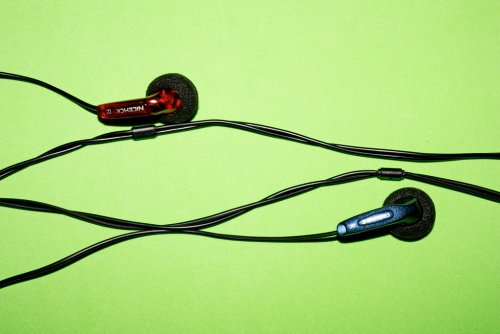 Conclusion
Conclusion
Both KBEAR Stellar and NiceHCK Traceless do not pretend to be a revolution, but an attempt to prove that you can offer a great sound at a minimal price. KBEAR tries it with a V approach, NiceHCK with a more homogeneous and smoother sound in the high end. The Stellar is closer to the classic bass drum and cymbal, offering a good treble extension. The Traceless have a more all-round profile, where the bass and mids are very well represented and the treble is sufficient. They even have a very good sound stage for their ridiculous price, being earbuds suitable for any situation: watching TV, series, films, plugging them into the mobile phone and, above all, listening to music with good quality and clarity. The Stellar are also good for all this, even offering a more three-dimensional and surprising scene in this sense, but their sound feels a bit more polarised, but also more spectacular.
I must confess that, at first, I thought the Stellar and the Traceless would have a very similar sound, as many of their characteristics are very similar. Fortunately, this was not the case, but they are two inexpensive earbuds with a different profile, allowing the user to choose the one he/she likes the most. Or why not! Buy both, as they can easily complement each other and the price is still very low. What more could you ask for?
 Sources Used During the Analysis
Sources Used During the Analysis
- Burson Audio Playmate
- xDuoo XP-2Pro
- E1DA #9038D
- Earmen Sparrow
You can read the full review in Spanish here



